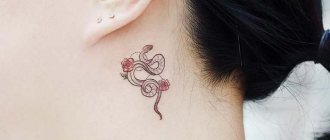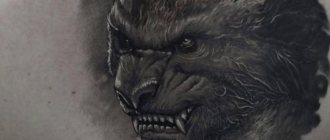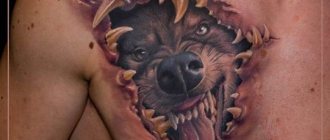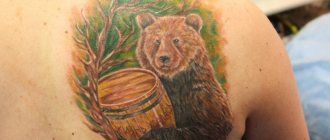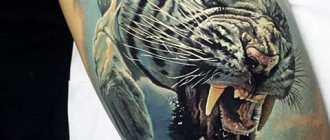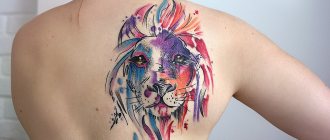How to draw a poutine in the corner of a leaf
To beautifully decorate a postcard or themed picture, you can use a sketch of a corner spider web, drawn by yourself. In order for the picture to turn out really naturalistic and it is necessary to repeat exactly all the steps of drawing the sketch and finish the composition by tracing small details:
- On the paper depict a vertical strip, from the upper point draw a horizontal line, this will be the base of the future beautiful spider web;
- from a common connection point, at different angles draw several rays, the distance between them should not be too small, 1.5-2 cm is enough;
- on the main and additional lines make a simple pencil marks, they will help to draw the connecting lines and give the figure maximum naturalistic;
- connect the marks starting from the top strip, and the connecting lines should be concave to the center, be smooth and repeat the shape of a half-circle;
- from one of the lines it is possible to descend one more flat line and on its end to draw a cute spider in the form of a circle with red eyes and 6 legs.
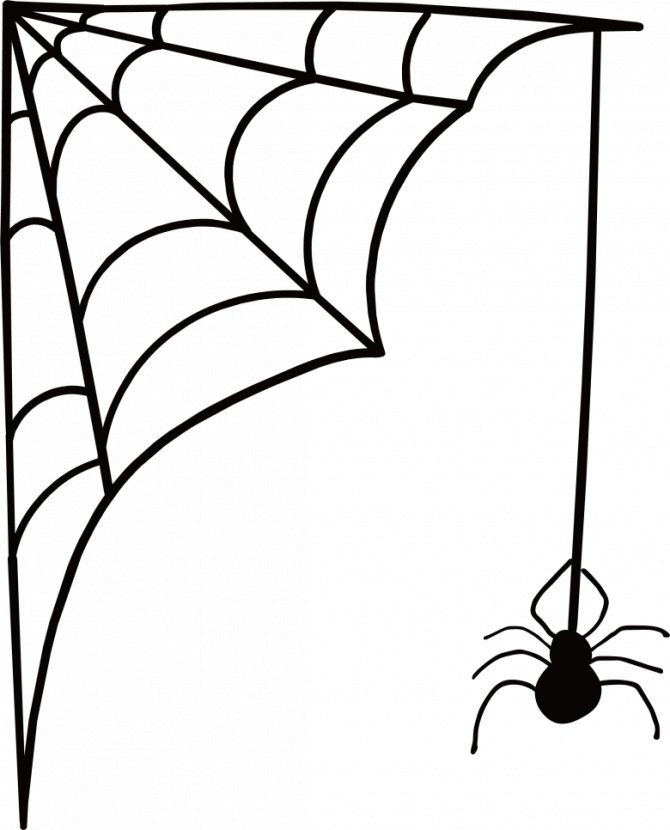
Such images can be drawn on the costumes of favorite characters from Bravo Stars or decorate a modern spaceship with them. Kids will love decorating their room or classroom before Halloween with these images as well, drawing temporary tattoos using body paint.
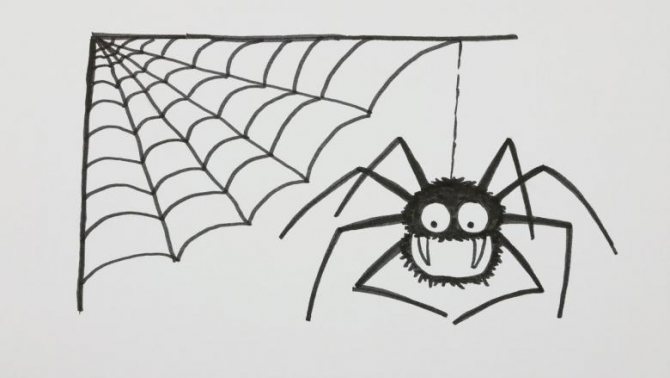

Spiders who decorate their web (21 photos)
The spider web is probably the most beautiful and intricate object created by members of the animal kingdom. However, some spiders are not content with the usual web. They go further.
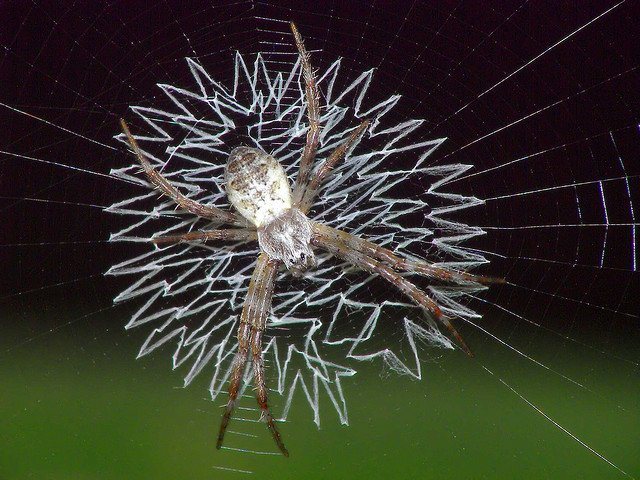

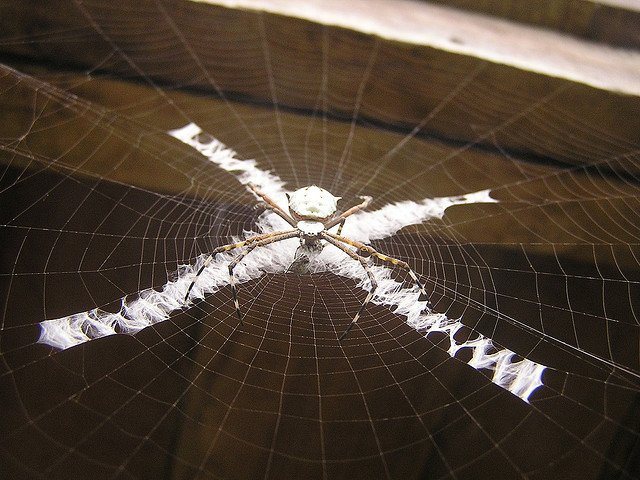

Photo: flickr.com
Some spiders decorate their web in much more elaborate and intricate patterns than necessary. Can they be considered the best designers on the planet? Of course, based on the examples we have given, this can be argued, but the verdict still does not explain in any way why they create such complex configurations. Some scholars argue that the complex web is nothing more than a "spider" aesthetic. Take a look at some of these designs and draw your own conclusions.
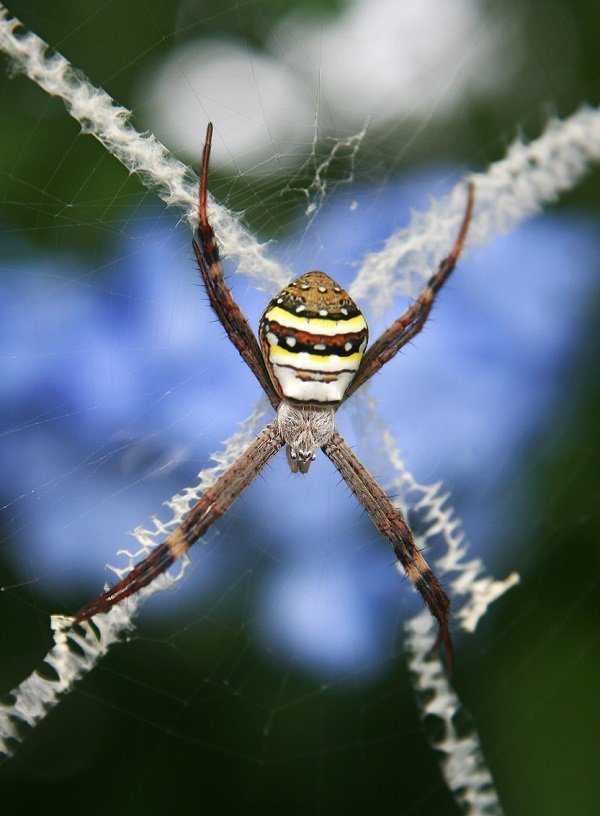

Photo: flickr.com
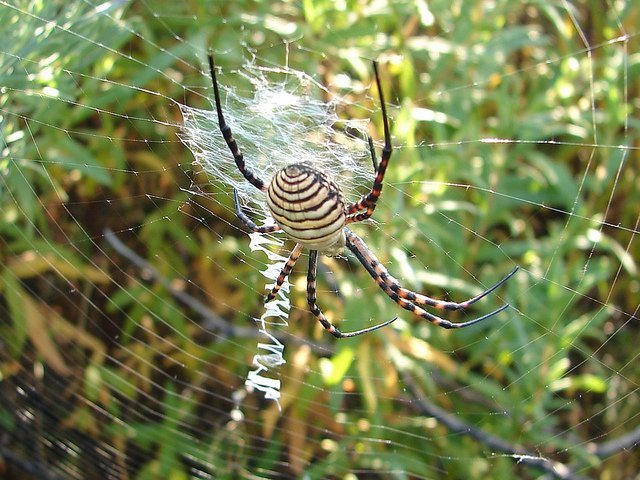

Photo: flickr.com
In the early fifties, children's writer EB White struggled to come up with an idea for his second novel. One day he noticed that there were unusual decorations on the web of the striped Garden Spider - such as the one pictured above. It was this natural object that inspired him to come up with the idea for a writing spider, and the writer set about creating one of the most popular children's books in the world, Charlotte's Web. Although it sounds ridiculous, the story is a great illustration of one of the most peculiar habits of insects.
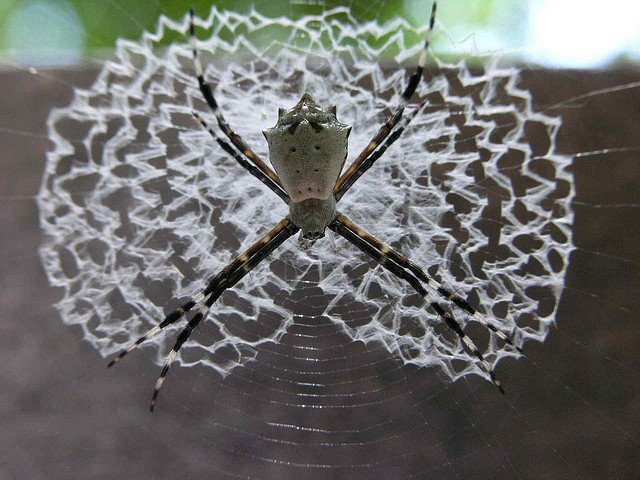

Photo: flickr.com
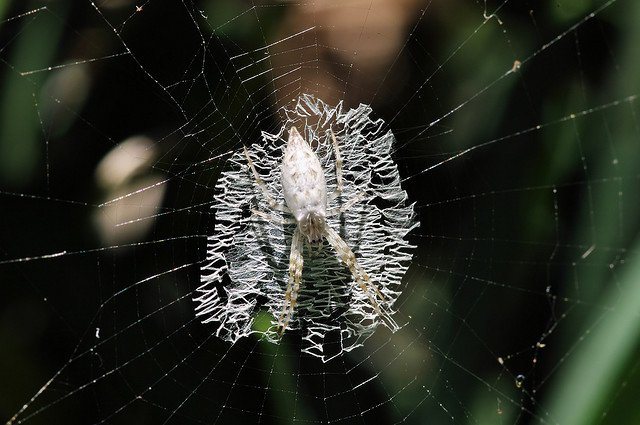

Photo: flickr.com
As one Miss Aniston said, it's a whole science. The structures look like web decorations, but their scientific name is stabilimentum. In the plural they are known as stabilimentums, and this name came about by mistake. When these "ornaments" first began to be studied, it was thought that they were used to stabilize the spider's web - and therefore "stabilimentum" - get it? However, this theory is now completely rejected, although it is obvious to everyone why scientists used to think so.
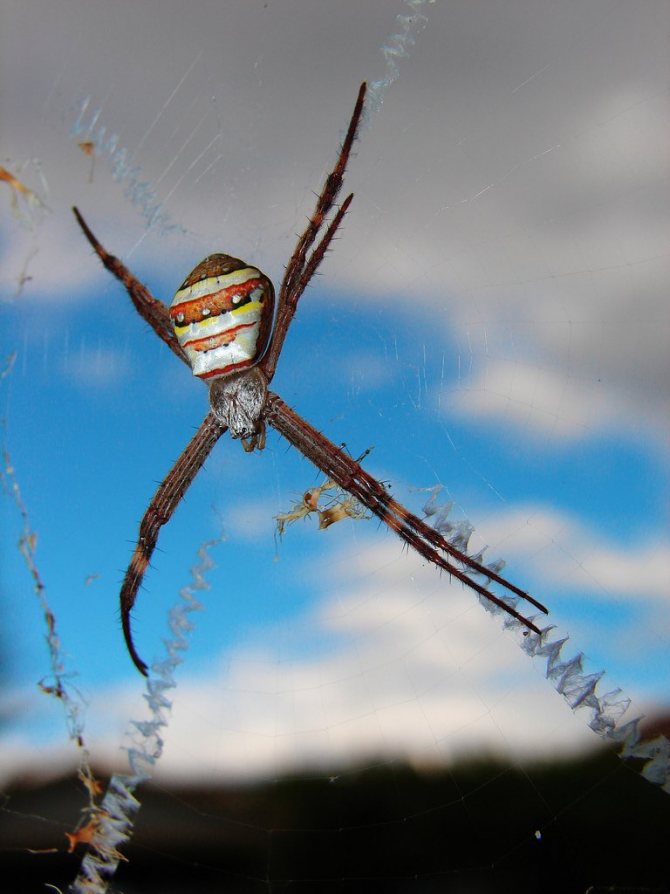

Photo: flickr.com
Truth be told, it's likely that the purpose and function of stabilumens are manifold. They have been found to appear independently of each other, sometimes as many as 10 of them. Some spiders make jewelry solely from silk. Other spiders create them from silk and the remains of their egg sacs, not to mention any debris that can be found near the web. The fact that they appeared independently seems to indicate a different purpose.
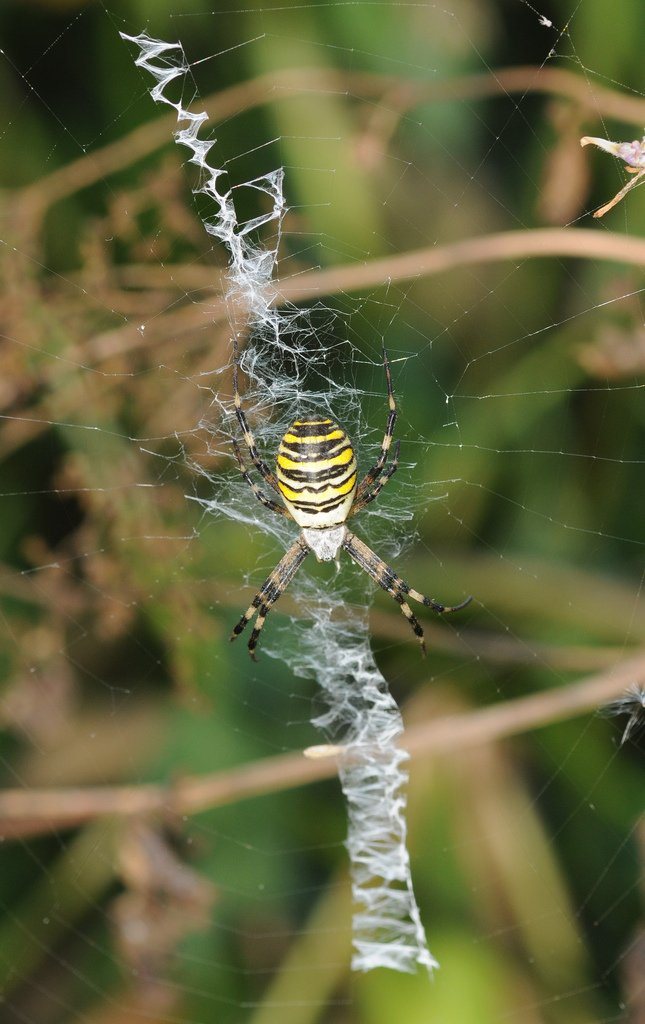

Photo: flickr.com
Several species of spiders are involved in decorating webs, the most famous "designers" are spiders belonging to the genus Argiope. St. Andrew's Cross spiders are among them the most talented web decorators. They got their name for their habit of resting on their web, stretching out their legs in the shape of the St. Andrew's cross. Ornaments on the web often form angles of forty-five degrees with almost mathematical precision and visually "elongate" the spider, which probably deters predators. Decorations can often be vertical, and young spiders sometimes even create them in the shape of a disk.
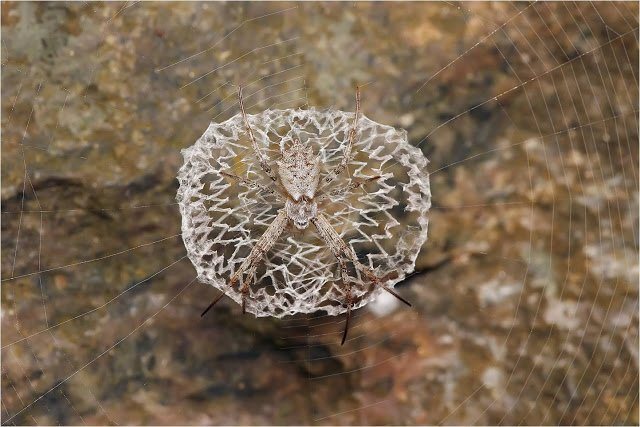

Photo: Wikimedia.org
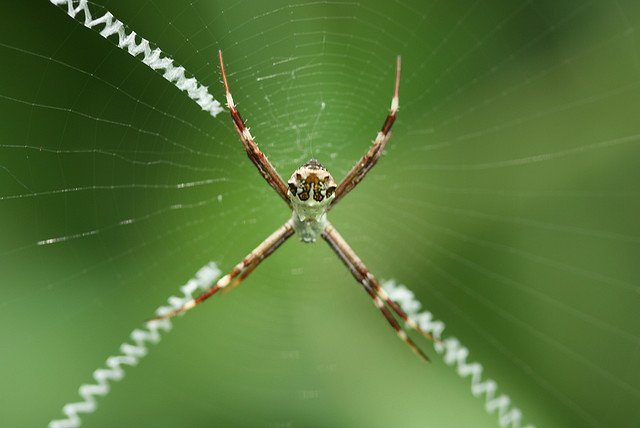

Photo: flickr.com
It's a pretty simple explanation, but if you ban five arachnologists in the same room and ask them about the purpose of decorating a spider web, you could very likely get five different answers. Some think it contributes to the spider's ability to defend itself. In addition to making the spider look larger in size, it also blends in with its surroundings, as in camouflage. The downside of using camouflage can be called that the spider, on the contrary, will become more noticeable than the web itself. Many animals, birds, for example, seeing such decorations will stop and will not go through the web, partially destroying or even destroying painstakingly created work. Thus, it may well be a kind of "STOP" sign for other animals.
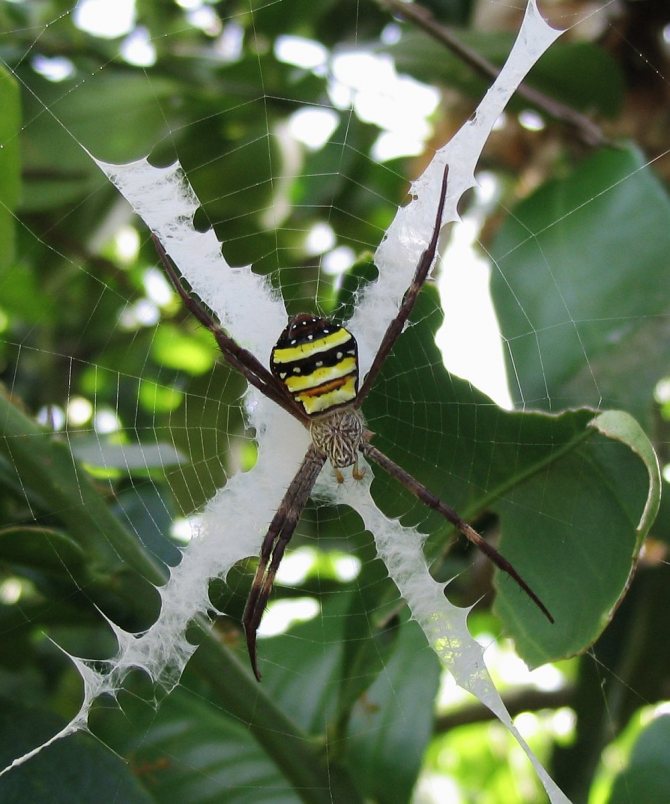

Photo: Wikimedia.org
Science evolves, and with it, so do theories. Another modern theory is that stabilumens are used to attract more prey into the net. Every one of us has seen how insects tend to fire at night. Ultraviolet light is often used to attract insects, and then we hear the insect's flesh explode under the action of the electric current. It is now believed that decorations on spider webs reflect ultraviolet light, and this makes them attractive to a huge number of different insects. They unwittingly fly to their deaths. It is rather unusual to think that for millions of years spiders have used as weapons something that we have only recently discovered.
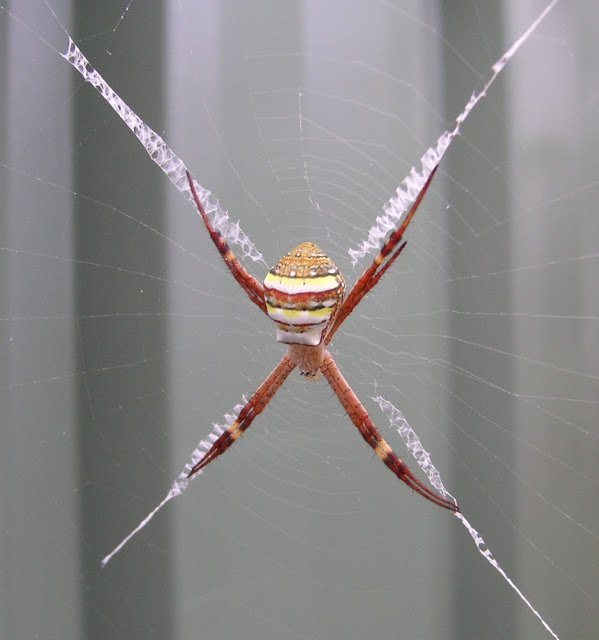

Photo: Wikimedia.org
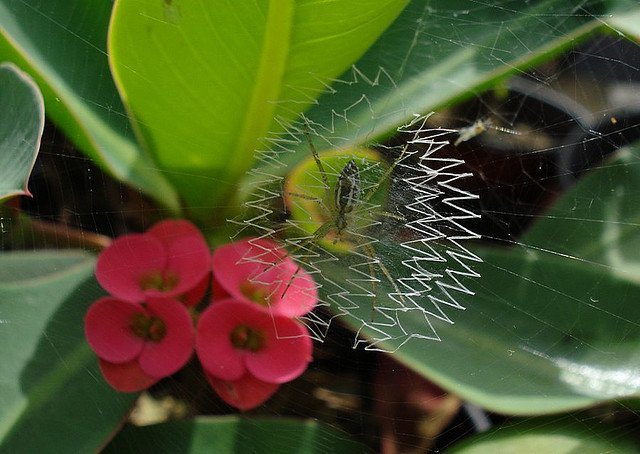

Photo: flickr.com
Thermoregulation was among the theories under consideration. Ornaments on the web may help the spider maintain an optimal body temperature for survival, regardless of the weather outside the web. Perhaps the stabilimentums help it create an equilibrium between its internal state and what's going on outside.
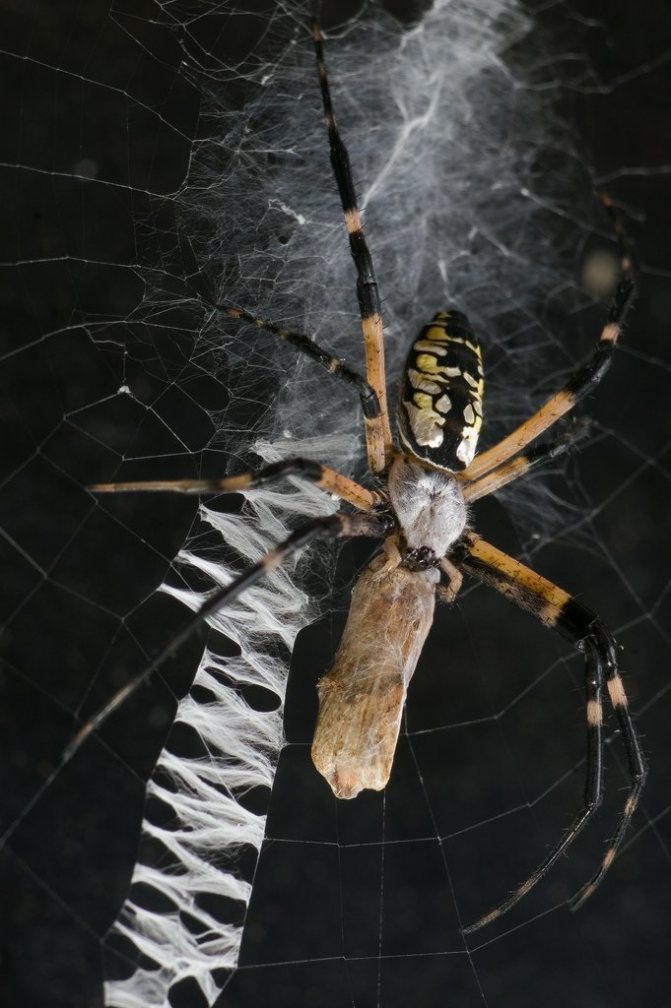

Photo: flickr.com
It's also possible that the spider simply produces more than it needs silk and weaves jewelry to get rid of it. This could be argued, since why would a spider spend time and energy creating intricate patterns rather than just getting rid of excess silk? This brings us back to the theory that the spider has a peculiar sense of aesthetics and, like a true designer, wants its creation to be beautiful. Perhaps this sounds a little too "human"? Well, it isn't, as many animals strive to improve their habitat - usually in pursuit of one thing.
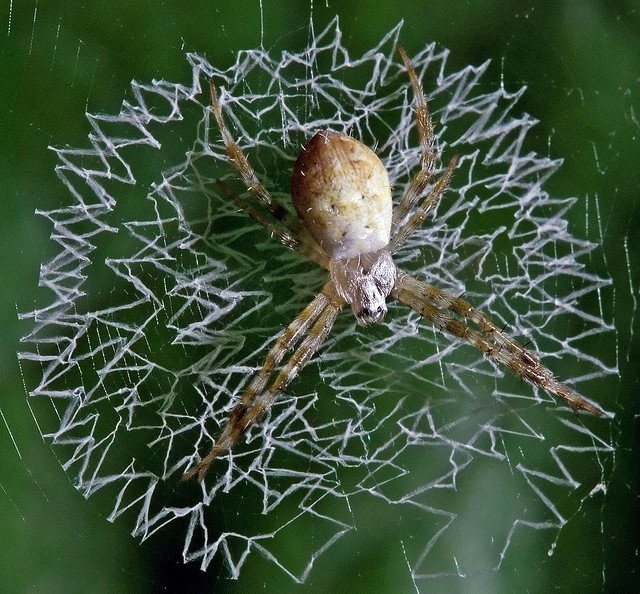

Photo: flickr.com


Photo: flickr.com
Yes, you got that right. The desire to breed may well be the reason that some spiders create web decorations. When a female is ready to breed, she needs to attract a male, and what better way than to enhance her already gorgeous web? The female and male of the aforementioned Argiope genus showed the Discovery Channel Chanel their way of reproducing the species. One study conducted in Spain showed that there is a definite link between stabilimentums and the presence of a male seeking to reproduce.
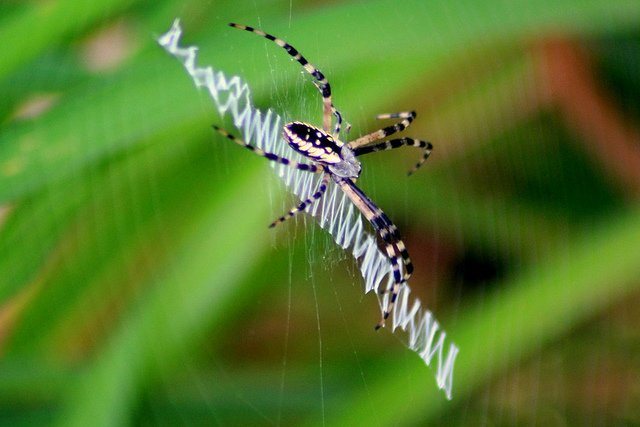

Photo: flickr.com
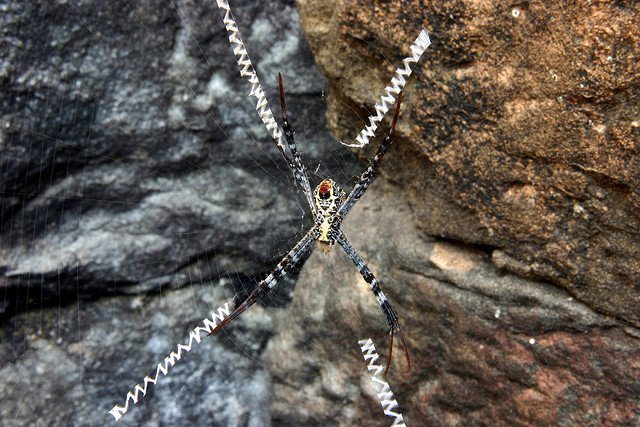

Photo: flickr.com
The most conspicuous adornments are usually made of silk, although some spiders often mix it with other elements when creating a stabilmentum. Again, another theory suggests that these ornaments help the spider camouflage and protect it. However, spiders of the genus Roundworm-Nephila often attach pieces of uneaten prey to their webs, lining them up. As incredible as it sounds, research has shown that this line of half-eaten carcasses actually contributes to more prey entering the web. And, yes, the pieces always stack up in a straight vertical line. However, this does compromise the aesthetics of the stabilumens to some extent.
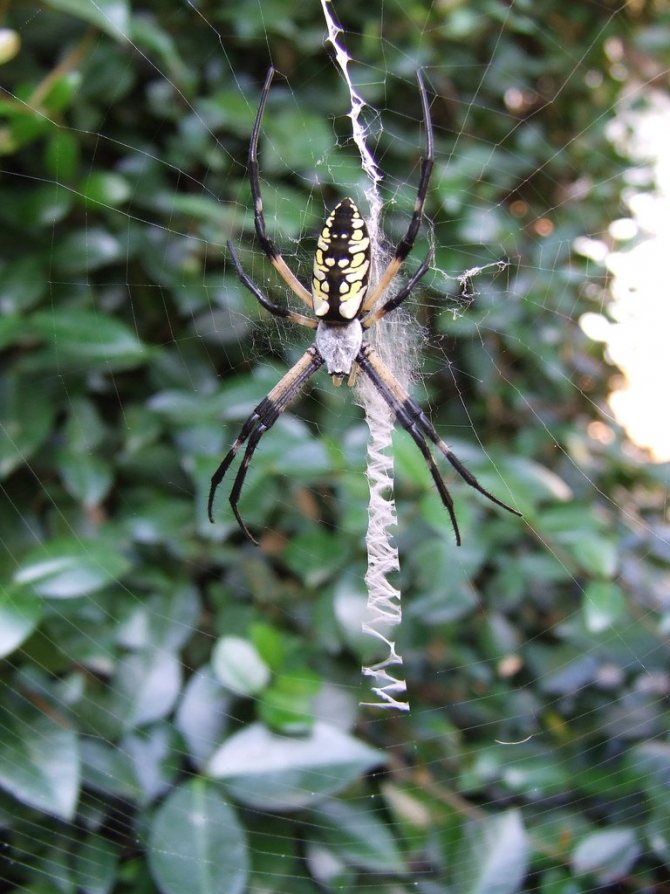

Photo: flickr.com
Regardless of why spiders weave their jewelry, it's certainly another wonder that nature shows us daily and that we often ignore.


Photo: flickr.com
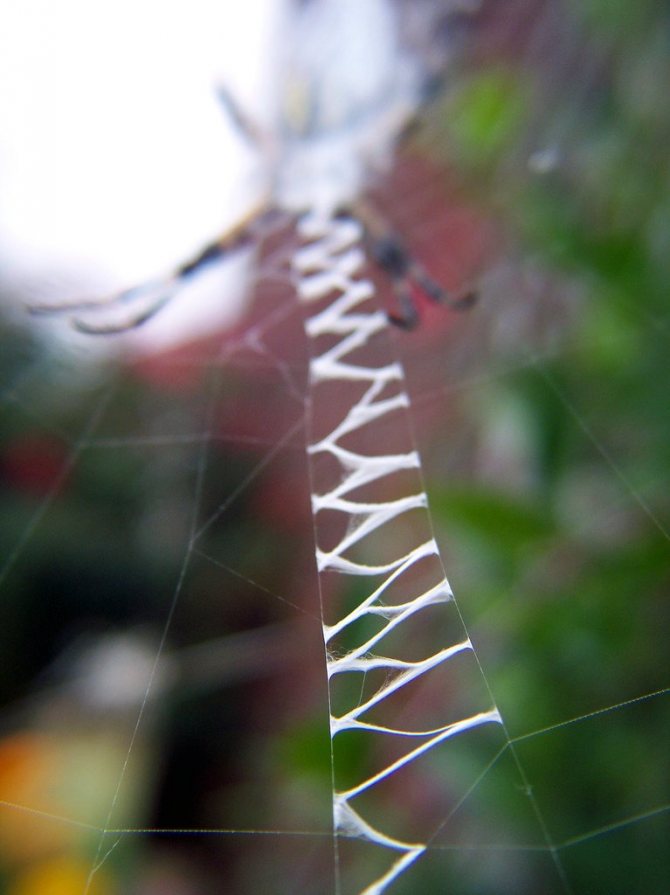

Photo: flickr.com
Unwrapped spider web on a piece of paper
Using a simple pencil you can depict an original and simple spider web on a sheet of paper, practicing your abilities. The best way to start the lesson is to mark out the future image and with this easy task a child of any age can cope with it, following the available recommendations:
- perpendicular lines are depicted on a sheet of paper with a simple pencil, in the center of their intersection they should be completed with rays dividing each sector in half;
- pencil marks are made on all the depicted segments, they should be placed along the length of the lines, making a different distance between them, not more than 0.5-1.5 cm;
- starting from the center of the image, moving clockwise, the notches on the rays are connected by lines concave to the center, creating smooth and uniform rolls;
- to make the drawing realistic in its center you can depict a small bundle for this you need to draw two ovals with different volumes (torso and head);
- to enliven the bundle will turn out with drawn legs, them at a spider must be 8, and to draw them better by semicircular lines, beginning from the place of connection of a body and a head;
- The body of a spider is sketched by black color, here the cobweb can be left sketched by a simple pencil, silvery-black color of slate ideally corresponds to shade of a spider web.
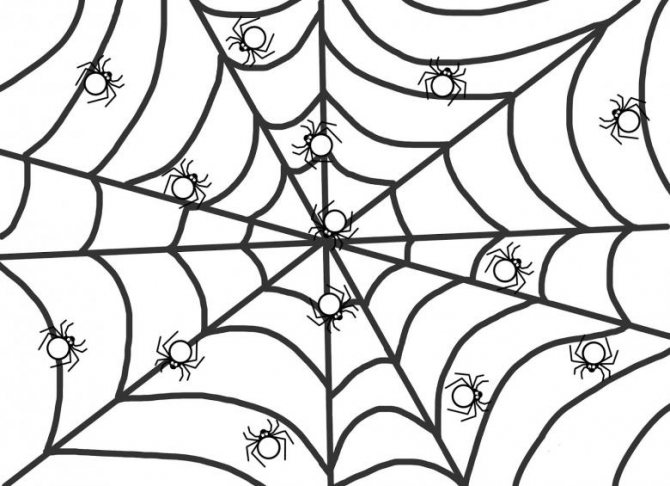

The finished drawing does not need to be further colored, and such a sketch can be used for making decorations for Halloween. Using diluted chalk or toothpaste it is possible to represent such a spider web on window-panes, preparing for the holiday, that will help to wash quickly and simply the drawing from glass.
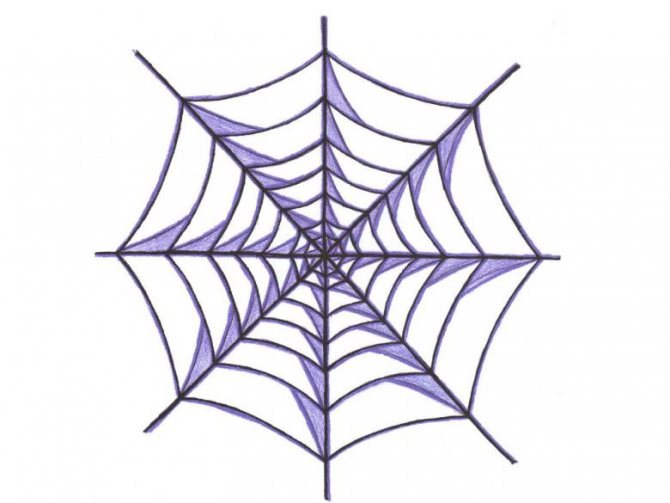

Beautiful spider web in thick colors
When the hand is already trained, you can use the spider web drawing scheme to depict decor on various objects. In this case, the surface itself should be perfectly flat and flat, and the paints should be thick enough and fast-drying, then the drawing will look as realistic as possible:
- It is first necessary to prepare the surface, clean it, polish and degrease it to remove dust, and draw an even circle on it with a pencil;
- a thick and quick-drying paint (you can use stained glass paint) on the surface outlines the boundaries of the sketched circle with even edges;
- it is better to choose a paint for the background in the tone of the painted surface and to fill the circumference in advance, leaving it thick and viscous, but spreading to the borders;
- using a wide brush or by squeezing directly from the tube, the outlined circle will be filled with paint, and the compound must not protrude beyond the borders outlined in advance;
- thick black paint, not diluted is squeezed out on the filled circle, starting from the center, drawing an improvised spiral with a distance between the lines of 1-1.5 cm;
- now it is important not to miss the moment and using a toothpick to give the poutine a finished look, for this purpose, a thin cream of a toothpick on the drawing is drawn lines from the center to the outer boundary;
- lines can be drawn randomly, but it is better to leave the same distance between them, and they should all come out of one point in the center of the improvised web
- the finished drawing must be completely dry and then the surface can be placed vertically or at an angle, it will not lose its volume.
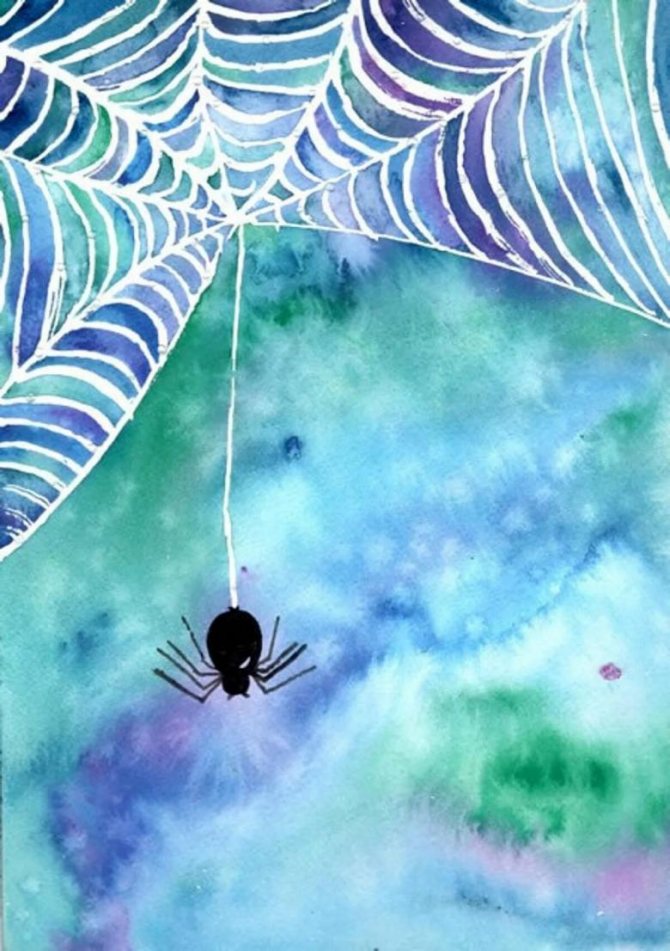

If the base is made of transparent and thick glue, and the threads of the spider web are drawn with black paint, such decoration can be made on glass, smeared with hand cream. After the glue dries, the base will remain transparent and easily comes off the glass base and such decoration can be used more than once for decorating rooms.
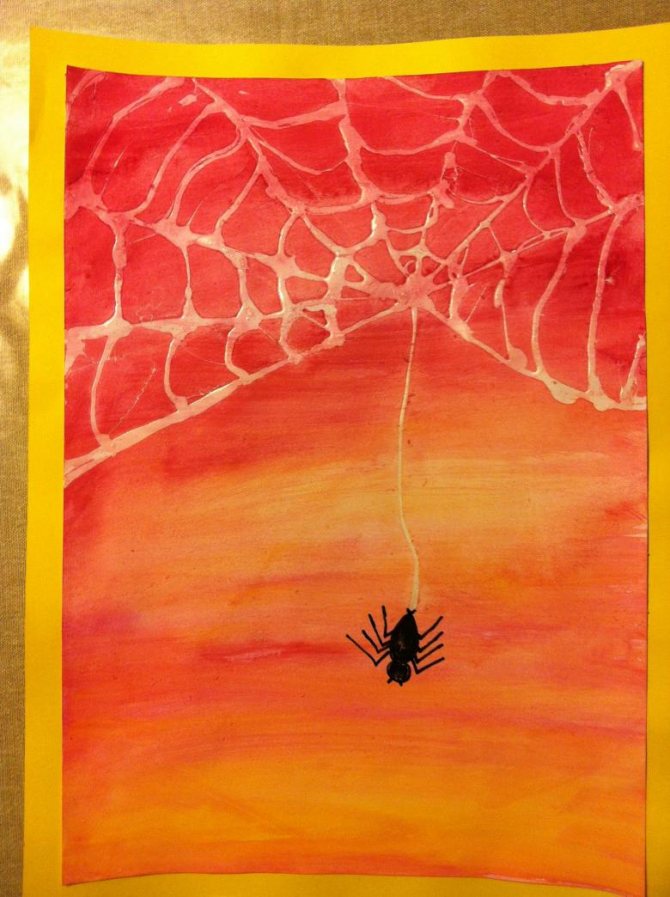

Each new drawing of spider web depicted on any surface will be individual and unique even if you carefully reproduce each step. The original and unusual image can be transferred to different surfaces, make a stylish decoration or temporary tattoos, themed postcards for holidays.
